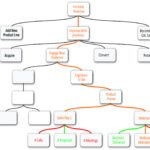Analytics deliver an overwhelming amount of information by way of reports. Much of it is fascinating, but the excitement of those reports wanes over time because the information is not used to effect daily business functions. And why should it?! It’s usually not relevant to the business. However, relevant insight will be gained by developing the right KPIs (Key Performance Indicators) for your business. Well crafted KPIs provide a road map to success.
This blog will guide you through KPI Karta®, a proven methodology to establish actionable KPIs. Although this blog focuses on website performance measurement, the methodology for crafting actionable KPIs and measuring them is appropriate for any business application.
KPI Failures
Identifying what values to look for and which reports to evaluate represents the biggest single issue for organizations in obtaining real value from analytics and the daunting array of reports. The creation of reports is often not the problem; the challenge lies in interpreting those reports and extracting the minutiae that have true meaning.
Part of the problem is that web traffic, customer data, product information and all other business reports don’t deliver much insight into how your site or business is doing. Much of the information can be used but it needs to be put in context and related to other data sets or over time.
Is having more visitors to your site a sign that the website is performing well? It may or may not be. It is if your business goal is to increase website traffic, but that would not typically be a goal for a site. At least, it should not be. We need to understand what visitors do and what they don’t do on our site to know if it’s working as it should or not.
A KPI (Key Performance Indicator) should immediately inform the reader how the business is performing which in turn should suggest what actions need to be taken.
And if we are measuring the effectiveness of a website, the KPIs need to inform on how the site is doing in driving our business objectives.
But most don’t. Too many organizations create Top-10 lists: Top-10 pages, downloads, videos, keywords, referrers, etc. Is it important to know which documents were downloaded the most, or what keywords drove the most traffic to your site? It may seem counter-intuitive, but it’s not. So what if a certain key word or campaign drove more visitors to your site than another? The critical piece is knowing whether they converted.
What is a Conversion?
When evaluating business performance and that of your website, you must look at conversions, which encompass much more than placing an item into a shopping cart and checking out. Conversions are any actions we hope a visitor will take and include things such as:
Login successfully
Complete a video
Register for event
Submit question
Forward to a friend
Make a payment
Rate content
Read about an event
Change site preferences
Fill in form
Opt-in
This is by no means a complete list. Businesses have unique website purposes and will offer different ways for visitors to interact. These need to be measured to understand if website changes need to be made to improve performance.
More visitors and pages viewed are indicators that site traffic is up, but not how well your site is performing. Perhaps your marketing campaigns are simply driving unqualified people to your website. How they convert, and better still, how they compare to last month is a much truer indicator of performance. Include the cost of campaigns, and we get a sense of which one is best for the bottom line.
KPI Karta® Methodology to Establish Effective KPIs
The KPI Karta offers a methodology to identify persons, departments and information sources for creating and supporting KPIs. Because KPI creation has been such a difficult task for many organizations, the KPI Karta has been developed as a best practice to ease the chore of KPI derivation. KPIs drawn from the KPI Karta quickly convey how a business activity is performing and how successful an overall website strategy is.
Specifically, the KPI Karta is a logical process designed to facilitate understanding between business and technology teams. As you can see from the KPI Karta diagram on the right, KPIs are driven by business goals and objectives but are constructed from measures. From the business side it breaks down business goals and objectives into critical success factors and from the technology side it constructs metrics from the available measures. The intersection of the critical success factors and metrics are known as Key Performance Indicators.
Contact a KPI consultant to learn more about our workshops that guide you through the KPI Karta methodology to identify the best KPIs for your business.
Here are the 5 steps to create measurable and actionable KPIs.
Step 1: Establish Goals & Objectives
Before we start measuring and analyzing web traffic, it’s essential that we state the purpose of our website. It may sound overly simplistic, but websites only have one of two purposes. They are either created to increase sales or to decrease costs. Here are examples of each:
Increase Sales:
Lead generation
Brand awareness
eCommerce
Social networking
Entertainment
These sites encourage better engagement with the explicit objective of increasing sales. They may not sell products online but attempt to increase brand standing and engagement and drive visitors to purchase more products or services.
Decrease Costs:
Customer education
Self-service
Customer service
Informational
Intranet
These sites encourage visitors to locate information and answers online in an effort to decrease support costs. It is far less expensive to provide information online than to staff a team of experts to field inquiries.
Understanding the purpose of your site will allow you to begin measuring site activity and improve its performance. And measuring key events over time is critical since we can see how things are improving as we make changes to the website. Since no web analytics report directly informs if you are meeting your goals and objectives, you need to build on the measures that are provided to determine if you are succeeding or not.
We will work through two examples to provide guidance for you to create them on your own. Here are two examples of Goals & Objectives.
Example A. Increase Sales
Example B. Decrease Support Services Cost
Step 2: Establish Critical Success Factors (CSF) from the Goals & Objectives
Critical Success Factors (CSFs) are a limited number of key activities that an individual, department, or organization should focus on to be successful. CSFs are specific conditions that measure or facilitate the meeting of business goals and objectives within set time frames.
A “good” CSF begins with an action verb and clearly and concisely conveys what is important and should be attended to. Verbs that characterize actions include: attract, perform, expand, monitor, manage, deploy, etc.
CSFs always combine two elements: a measurable activity and a specific time frame.
Example A. Increase leads by 25% over the next 12 months
Example B. Decrease call center calls by 20% over the next 12 months.
Step 3: Establish Key Performance Indicator (KPI) from CSF
A critical success factor is not a KPI. CSFs are elements that are vital for a strategy to be successful. KPI’s are calculated measures that quantify the CSFs and enable the measurement of that strategic performance. KPIs are always calculations of Measures which are determined in the next step.
The identification of KPIs is done in step 3, but the calculation of them is done in step 5. As will be seen in the next two steps, there are an endless number of Measures and Metrics to be considered. Not all Metrics inform us how our business or website is performing, but those that do are KPIs. All KPIs are Metrics, but not all Metrics are KPIs. This concept will be better understood once steps 4 and 5 are completed.
KPI Example A. Percentage of visitors converting to leads compared to last month
KPI Example B. Ratio of call center calls to online support compared to last month
Now that KPIs have been identified, we can look at the Measures that make up the chosen KPIs. Since Example A is the percentage of visitors converting to leads, we must first find those measures and do the appropriate calculation to obtain that ratio. For Example B, we will need to collect Measures from both the call center and online support data.
Step 4: Collect Measures
Measures are raw numbers that in and of themselves have limited usefulness, but ultimately need to be related to each other to extract the most meaningful information possible. Measures are the lowest level of detail in the methodology and are found in web analytics reports, corporate databases, call center reports, or various other data silos. Relevant Measures need to be gathered so we can determine Metrics in Step 5.
These Measures are equally valid for both Example A and B:
Page views
Visitors
Keywords
Pdf downloads
Daily support calls to call center
Campaign data such as PPC (price per click)
Step 5: Calculate Metrics from Measures
Metrics are calculations of Measures and are always expressed as ratios, averages, rates, or percentages. By definition, we can have an infinite number of Metrics since we can slice and dice the Measures any number of ways. It’s equally important that Metrics are defined by a time frame.
As noted in Step 3, all KPIs are Metrics, but not all Metrics are KPIs. To be considered a KPI, the Metric needs to be important enough to inform how the site is performing. Notice that the first two Metrics match the KPIs we identified in Example A and B.
Again, these Metrics are equally valid for both Example A and B:
Percentage of visitors converting to leads as compared to last month (KPI from Example A)
Ratio of call center calls to online support as compared to last month (KPI from Example B)
Average pages viewed per visit compared to last period
Leads per referrer compared to last period
Conversion ratio of visitors to leads
Percent of new visitors compared to last period
Length of visit compared to last period
Online service completions compared to call center support calls
Conclusion
In conclusion, web analytics reports or any business reports themselves are not very useful for determining success. However, understanding business goals and objectives and establishing KPIs to measure them provide tangible and concrete evidence that either we are on the right track, or we need to make changes to improve results.
Contact a KPI specialist if you need help. We provide KPI consulting workshops that guide clients through the 5 step KPI Karta methodology to identify the best KPIs for their business.





